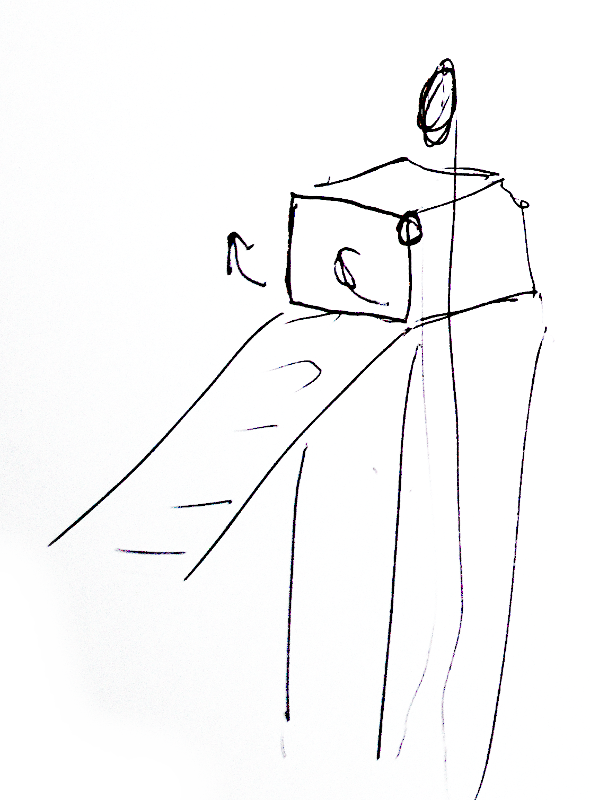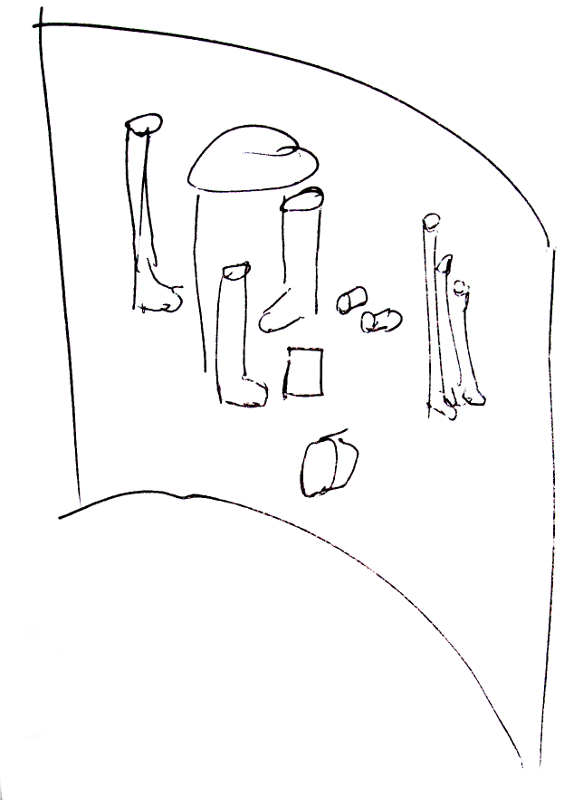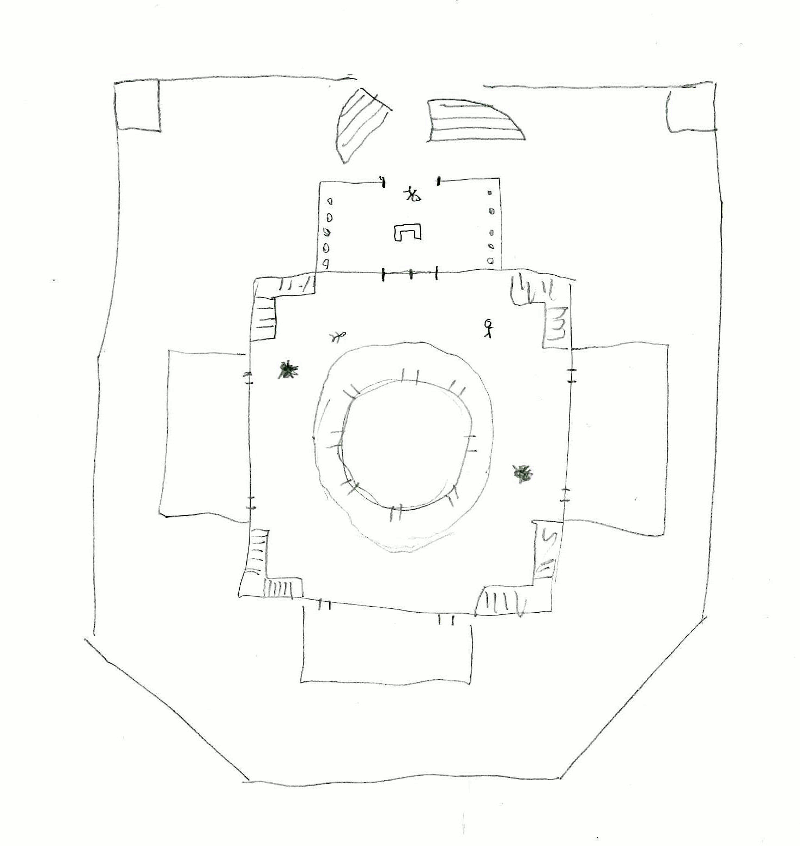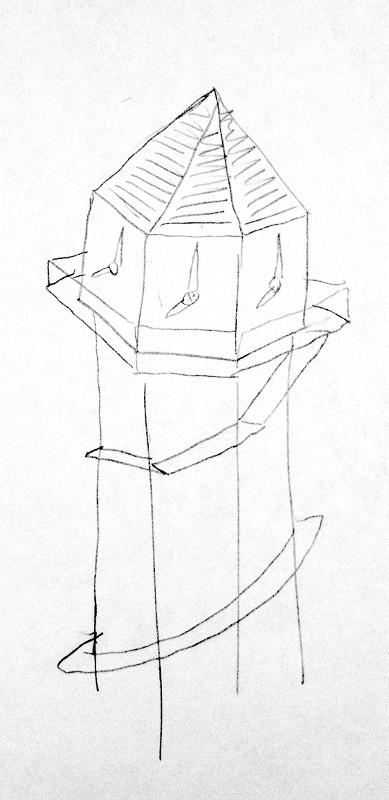Chasing the Sunset is a West Marches-style exploration game using Fellowship 2nd Edition‘s Horizon rules.
The party: Buckle the Platyperson, Stella the Halfling
GM note: Stella was last seen in Bogden, but Buckle is in Swallet. Instead of playing out scenes of the two deciding where to meet and going there, we decided that Stella had traveled to Swallet with Buckle in the previous session. She was just in the background.
Stella and Buckle emerge from the waste disposal facility and see the city of Swallet for the first time. It’s underground. There’s a roof over the entire city. Light is provided by crystals in the ceiling that refract sunlight from the surface. There are busy streets filled with goblins rushing around on various strange, unique vehicles. A park on the far end of the city is visible even from here. A large stone pipe emerges from the far wall near the ceiling, and a waterfall pours from the pipe into a pool below. A 20-foot tall taper candle in a nearby square acts as message board for adventurers. Stella and Buckle read notes written by other players about the city.
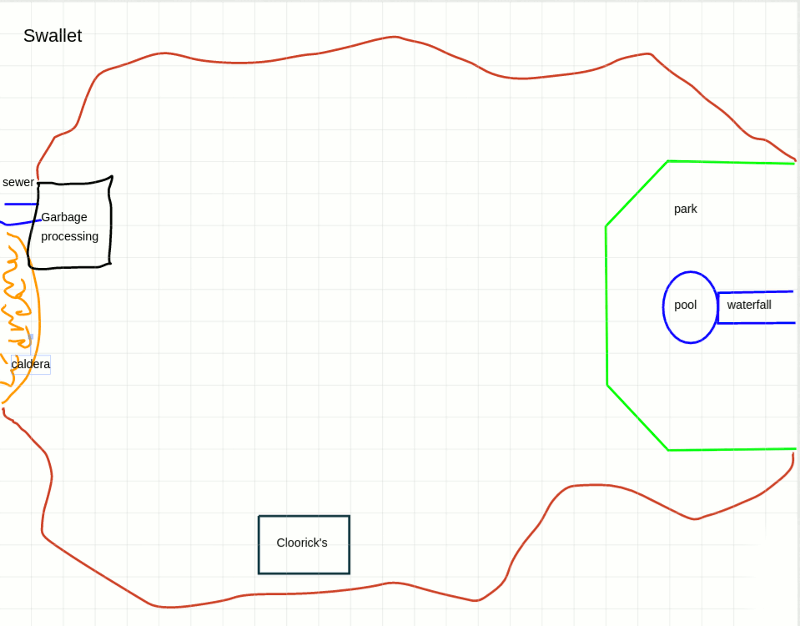
Buckle came to this city chasing Brainiac, but he’s never met the man. “Why are we fighting this guy?” he wonders aloud. It’s really hot in here, which is a bit worrisome since heat in a volcano has an obvious and dangerous source. The park with the pool seems like a nice place to be, so Stella and Buckle head that way. As they walk down a street, two figures leap over the buildings from opposite sides! Goblins in Power Suits! Goblins are about the same size as Halflings or Platypeople, but inside their robotic armor, they would tower over humans. Nub-Nub, the leader of the pair, says, “Outsiders! Here to steal the secrets of our technology, no doubt! You must leave at once!” The party truthfully explains that they don’t know anything about secret technology, and that they are chasing an outsider who broke into Swallet for nefarious purposes. Less true is the claim that they are searching for him in the park. The armored police leap ahead to search for the other intruder.
The park is busy, since it’s unusually hot. In additional to green space for recreation and relaxation, the park also contains large swamp coolers that pump cool air elsewhere in the city. Stella wants to look behind the waterfall, because there’s always something cool behind a waterfall. She does not find anything cool behind the waterfall, but while she’s looking, a chunk of stone falls from the pipe from which the waterfall emerges! She gets out of the way and sees someone climbing into that pipe. No doubt that person dislodged the stone that nearly crushed her. Nub-Nub and her partner leap up into the pipe in pursuit. Silk, Stella’s giant spider mount, takes her up the wall and drops her off at the mouth of the pipe. She sends Silk back to the ground to bring Buckle. The pipe is about 5 meters across, made of old stone, and water is pouring out of the broken end constantly. She has to brace herself to walk against the current and not be swept away and over the waterfall! Silk brings Buckle up, and Buckle swims against the current.
It’s dark in the tunnel. The only light is from the opening at the waterfall. Buckle’s electrical sense can easily detect the two Power Suits, since they generate a lot more electricity than most living creatures. Stella and Buckle walk up the tunnel after them. When the party reaches the Goblin police, they have apprehended the Brainiac! He demands that they unhand him, lest they face the wrath of the great wizard, Allan a Zham! Buckle pipes up, “Don’t you mean the LATE wizard?” Brainiac doesn’t get it. “A wizard is never late. Nor is he early.” Buckle has to clarify. He means that Allan a Zham is dead. Brainiac doesn’t know that he was sent on his mission by someone impersonating his dead master, so he’s still confused.
Stella has a plan to wreck this jerk. She shrinks to the size of an apple and has Buckle tail-swat her towards Brainiac’s chest. She was going to enlarge in mid-air to strike a powerful blow, but Nub-Nub is too quick, spinning and knocking Stella out of the air with a rocket fist! Stella is pinned to the wall by the metal fist! “You dare attack a prisoner? He is under my protection!” Brainiac finally understands why Allan a Zham was acting so strangely at their last meeting and freaks out! He wails about his dead master and struggles against the other Power Suit restraining him. Stella tells Nub-Nub, “I’m trying to help!” Nub-Nub doesn’t want help, and fires her other rocket fist at Stella! Brainiac gets loose and runs further up the tunnel into darkness. the police aren’t sure whether to pursue him or arrest Stella and Buckle. Buckle yells at them to pursue Brainiac. Nub-Nub agrees, but says that they’d better be gone by the time she returns!
The armored police disappear up the tunnel, leaving Stella and Buckle alone. “That was a bad plan,” says Buckle. “They can’t all be good,” says Stella. Buckle leans back and lets the current carry him back to the mouth of the pipe. Silk ferries them back to the ground. It’s still very warm in Swallet, but our party is all wet, so that will keep them cool for a while. They need more information, so they stop a friendly Goblin named Gabber and ask about some things they read on the message board. Gabber has never heard of a troll holding a pearl. Gabber knows where the fight club is, but he wasn’t allowed in. He built a weird gadget that he thinks would give him an edge. He’s happy to demonstrate it, but it hasn’t been fully tested and the party convinces him not to. They ask if there’s a source of great power in the city, something magical. Pretty much the worst thing that could happen to Swallet is outsiders coming in to steal the secrets of their technological power, so our party just revealed themselves as an existential threat to poor Gabber. He stammers that there’s no magic here, and activates his steam-powered heelies and zooms away in a panic.
Stella and Buckle follow Gabber’s directions to Cloorick’s Fight Club. There’s scaffolding over the entrance because the front door is being replaced. The workers are dismissive and insulting, until Buckle asks if they have seen a baby dragon. “You know Fafnir?!” yeah, Buckle knows Fafnir. He hatched her from an egg. Suddenly Buckle is a celebrity. Fafnir is the leader of this Fight Club. They are replacing the door because she smashed it in. Rabbish says, ‘One time, she punched me in the face. It was awesome!” The fighters in the club all want to be just like her, but they can’t because they don’t have wings. The party recommends that they build some wings, since they’ve already built giant arms and other technological aids. Several goblins immediately pull out sketch pads and start working.
Rabbish shows Buckle and Stella around the facility, including the arena, where they see Ori sparring with a Goblin wearing exo-sketetal robot arms.
GM note: I described Ori, who is like nothing the characters have ever seen, and the players were impressed. Then I told them that Ori was another player’s character, and they were impressed again. It’s cool to have a world changed by real people you haven’t met.
Buckle wants to spar! He’s matched against Ugg, the Goblin who just fought Ori. Buckle prepares for battle by applying warpaint to his face and bill. The arena has been recogfigured since Fafnir and friends fought Cloorick. There are still doors for the opposing teams on opposing sides and a raised platform in the middle, but there are also stage hazards: mechanical arms coming out of the floors and walls that will punch, grab, and throw anyone who comes near.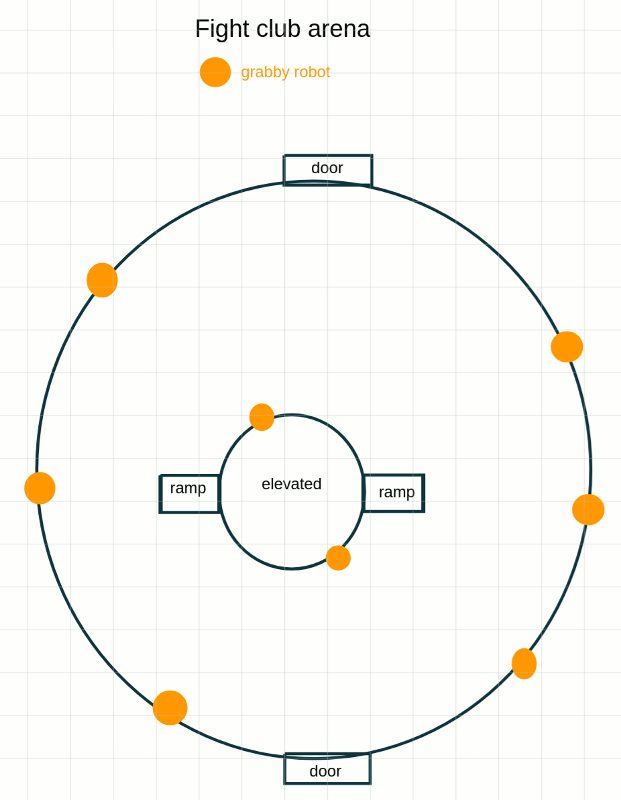
The fight begins, and Buckle runs up the ramp to take the high ground. Ugg is right behind him, when Buckle yells and slaps his tail on the ground in an intimidating display of force! Ugg is terrified and can’t approach, but he won’t give up. If he can’t walk up to Buckle and hit him, he needs to hit him from far away. A projectile! Ugg approaches a hazard and starts to rip the mechanical arm out of its fixture. Buckle takes this opportunity to break line of sight, dropping off the far side of the platform away from Ugg. Ugg turns to throw his makeshift weapon, but can’t see Buckle. He warily circles the platform, seeking his opponent. Buckle strikes from ambush, delivering an aerial spinning tail-slap right to Ugg’s unarmored face! Lights out! Ugg is knocked unconscious. Stella cheers from the stands, and other Goblins rush in to tend to Ugg. Ugg is not hurt, and after he wakes up, congratulates Buckle on a well-fought match. All one needs to do to get the respect of these martial artists is to beat them up!
After all this, Stella and Buckle wonder if maybe they are looking for the magical power in the wrong volcano. There are two of them, after all.
